How is the nail function report interpreted and how is hyperthyroidism and hypothyroidism confirmed?
The thyroid gland is an important gland for maintaining normal endocrine secretion in the human body, and its normal function is very important. There are three types of thyroid function: normal thyroid function, hypothyroidism and hyperthyroidism. Hypothyroidism is characterized by clinical hypothyroidism and subclinical hypothyroidism, while hyperthyroidism is characterized by clinical hyperthyroidism and subclinical hyperthyroidism. Next, Dr. Fresh from the Family Medicine Department will give you a description of each of these conditions. Thyroid function reports are generally categorized as either triple thyroid function or penta thyroid function. In the case of thyroid function report, TSH (thyroid stimulating hormone), FT3 (free thyroid hormone 3), FT4 (free thyroid hormone 4), and thyroid function report, TSH, FT3, FT4, TT3 (total thyroid hormone 3), TT4 (total thyroid hormone 4) are referred to as thyroid function report.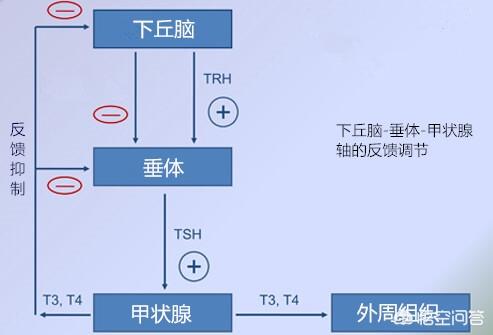
Normal A-function: i.e., all three A-functions, or all five A-functions are normal, and each value is within the reference value range.
Hypothyroidism: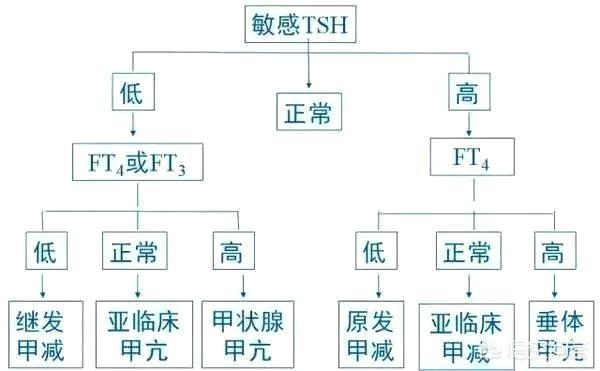
- Clinical hypothyroidism: increased TSH, decreased FT3 and FT4, decreased TT3 and TT4. Clinical hypothyroidism, requiring the administration of levothyroxine supplementation.
- Mild subclinical hypothyroidism: TSH is increased, but <10, FT3, FT4 is normal, in this case, if there is no corresponding obvious manifestations, can be temporarily observed, 1 month or 3 months after the review, according to the review situation to decide whether to use drugs to treat.
- Severe subclinical hypothyroidism: TSH is increased and >10IU/L, FT3 and FT4 are normal, in this case, the corresponding manifestations of hypothyroidism may occur, and medication needs to be given.
Hyperthyroidism:
- Clinical hyperthyroidism: decreased TSH, increased FT3 and FT4, increased TT3 and TT4. Depending on the cause of hyperthyroidism, antithyroid medication is usually required, except for pharmacologic hyperthyroidism.
- Subclinical hyperthyroidism: decreased TSH, normal FT3 and FT4.
Interpretation of thyroid-related antibody results:
Positive TPOAb (Thyroid Peroxidase Antibody) and TgAb (Thyroglobulin Antibody) are usually considered as possible presence of Hashimoto's Thyroiditis. Hashimoto's Thyroiditis can be characterized by hyperthyroidism, normal thyroid function, and hypothyroidism, but the three states do not occur simultaneously, and the typical pathological process goes through the stages of hyperthyroidism, normal thyroid function, and hypothyroidism. Hashimoto's hyperthyroidism is treated according to the degree of hyperthyroidism, and the treatment period is generally shorter than that of ordinary hyperthyroidism.
Positive TRAb (Thyroid Stimulating Hormone Receptor Antibody) is usually considered for Graves' disease and is more commonly used to test for the cause of hyperthyroidism.
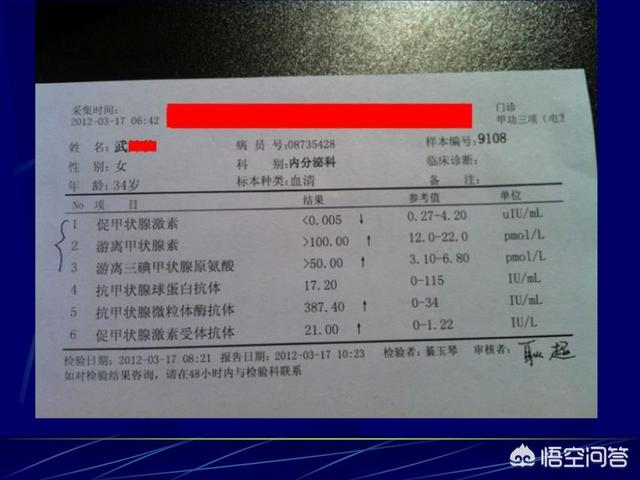
The picture above is a typical hyperthyroidism caused by Graves' disease.
Thyroid function can be reviewed without having to review thyroid-related antibodies again. The presence of antibodies is primarily used to determine etiology and has some value in guiding treatment, mainly because of the difference in the duration of treatment for hyperthyroidism.
I'm Dr. Fresh in General Practice, thank you for reading, if you think it's okay, please give me a like, click follow to get more health knowledge science, welcome to forward the comment.
Thyroid function test report, how to read? This problem must be a good chat with you, in addition to the thyroid disease is now more and more people, do the thyroid function test more people, the main thing is that a lot of people for the thyroid function test there are a lot of doubts, such as usually our doctor will always say that the thyroid function of the 5, and sometimes will see other people's report is the thyroid function of the 6, this is why?
How should thyroid function be interpreted? And how does your doctor confirm whether you are hyperthyroid or hypothyroid?
Thyroid function tests inside the hospital usually consist of four parts:
One is the measurement of thyroid stimulating hormone (TSH)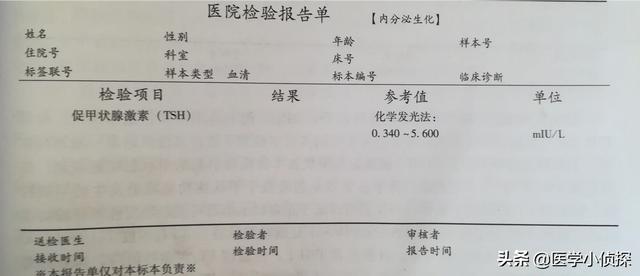
Thyrotropin acts to promote the synthesis and release of thyroid hormones; therefore, in general, TSH concentrations reflect the status of thyroid hormones in the tissues.
Caution:Thyroid-stimulating hormone (TSH) is a very important indicator for evaluating our thyroid function. If the TSH concentration is within the reference value and there is no clinical evidence of hyperthyroidism, hypothyroidism, or other types of thyroid dysfunction present, there is no need for additional testing.
Second, thyroid hormone measurement
Thyroid hormones are synthesized and secreted by the thyroid gland and include thyroxine T4 and triiodothyronine T3, which in turn have free thyroxine FT4, free triiodothyronine FT3.
Therefore, the thyroid hormone measurement is generally said to include the following five items(as shown)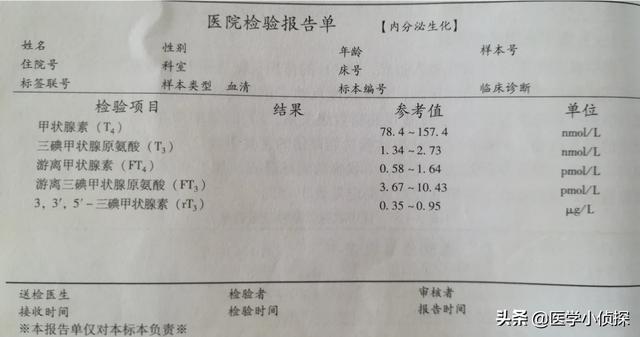
Third, thyroxine-binding globulin (TBG) is measured
Thyroxine-binding globulin (TBG), an alpha-globulin synthesized by hepatocytes, is the major transport protein for thyroid hormones in our plasma, and its alteration has a significant effect on TT4 and TT3.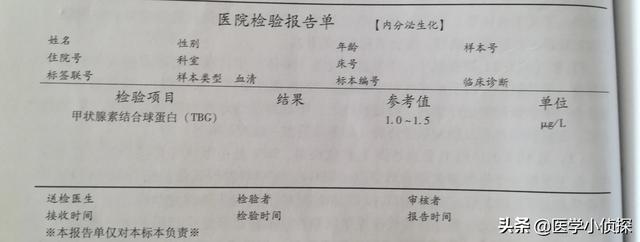
But:The TBG assay is generally used to evaluate thyroid stimulating hormone levels or clinical symptoms that do not match, and if they do, the program is generally not done!
Fourth, thyroid antibody measurement
This is mainly to measure a variety of antibodies against thyroid autoantigens in our blood, and is not usually necessary if you simply want to determine whether you have hyperthyroidism or hypothyroidism!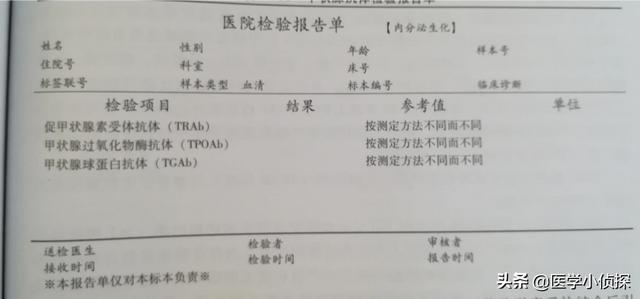
So how do our doctors determine if you have hyperthyroidism or hypothyroidism?
Under normal circumstances, when your doctor suspects that you may be suffering from hyperthyroidism or hypothyroidism, he or she will usually ask you to do the 5 thyroid function tests, which are: thyroid stimulating hormone TSH, thyroid stimulating hormone T4, triiodothyronine T3, free thyroid stimulating hormone FT4 and free triiodothyronine FT3.
But focus attention:If the screening test is only for the diagnosis of thyroid dysfunction, the thyroid stimulating hormone TSH assay needs to be selected instead of the thyroid hormone assay, i.e., only one TSH is needed for the screening test!However, if it is to determine whether the patient is specifically hyperthyroid or hypothyroid, both thyroid stimulating hormone and thyroid hormone should be tested, i.e., a 5-item thyroid test is done!
It is judged as follows:
- A decrease in free thyroxine FT4 and an increase in thyroid-stimulating hormone TSH.Hypothyroidism can be determined to be caused by a disease of the thyroid gland itself;
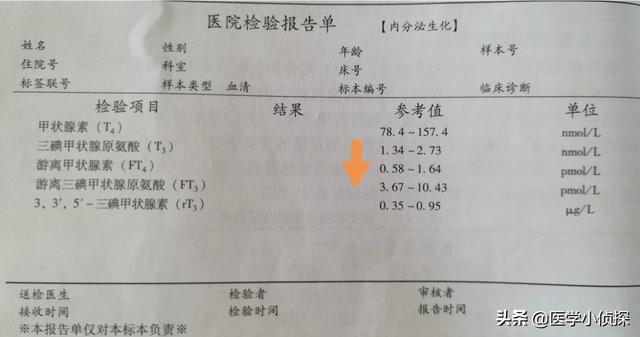
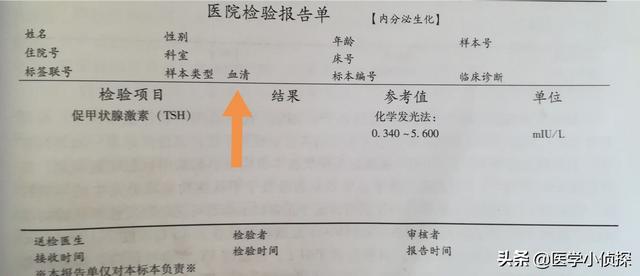
- free thyroxine FT4 is normal or only slightly decreased, while the thyroid hormone TSH is elevated.That is, it is considered an early stage of hypothyroidism;

- Free thyroxine FT4 is below normal and TSH is normal or below normal, theIt could be secondary to hypothyroidism.The diagnosis must be further clarified with additional tests of the pituitary-hypothalamic axis;
- Elevated concentration of free thyroxine FT4, thyroid-stimulating hormone TSH <0.1 mIU/LSuggests hyperthyroidism.;
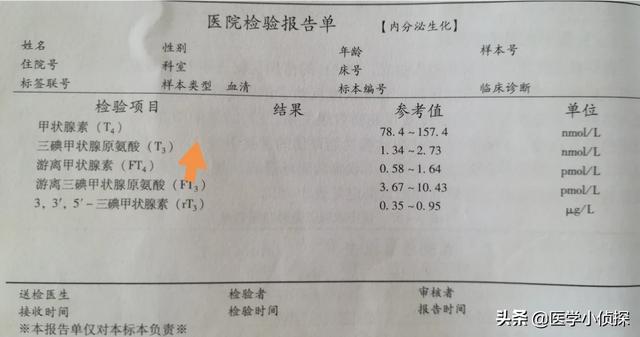
- Normal free thyroxine FT4, elevated free triiodothyronine FT3, and decreased TSH.Hyperthyroidism may also be diagnosed.
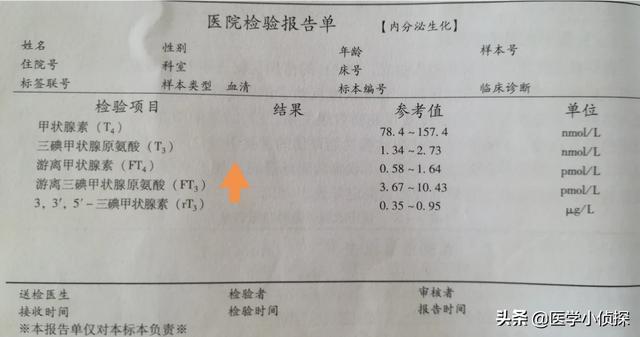
Hi, as an endocrinologist I am happy to answer your question. This is a question that is often mentioned.
Thyroid function report forms often show the following data: T3 (FT3), T4 (FT4), TSH; and two antibodies, TPOAb, TGAb;
What exactly does that mean?
The thyroid function that we usually draw blood for is the level of thyroid hormones in the blood. Thyroid function should generally be checked in all patients with thyroid disease. There are only three types of thyroid function in patients with thyroid disease: normal, hyper (subclinical or dominant) or hypothyroid (subclinical or dominant). The specific lab tests are T3 (FT3), T4 (FT4), and TSH. FT3, FT4 are the free thyroid hormones that are not bound to proteins in the bloodstream and are the main hormones that work. While T3, T4 are thyroid hormones that are bound to proteins, which can't function, but previously it was not possible to measure free thyroid hormones. Therefore, total T3 and T4 can also reflect thyroid function because they generally match each other, but there are also mismatches, which will not be specifically expanded here and will be left to the doctor's judgment.
If the TSH level is lower than normal, look at the serum T4 (FT4), T3 (FT3) level, if the serum T4 (FT4), T3 (FT3) increase, it is dominant hyperthyroidism. If the serum T4(FT4) and T3(FT3) levels are normal, it is subclinical hyperthyroidism.
If the serum TSH level is higher than normal and the serum T4 (FT4) and T3 (FT3) levels are low, it is overt hypothyroidism; if normal, it is subclinical hypothyroidism.
Remember that generally they are opposite, there are cases where they are not opposite, then there is a specific analysis, it could be a lab error or it could be a pituitary disease, the specific problem cannot be solved by answering a question one way or the other.
In addition, the laboratory test of thyroid function will also show two antibodies, TPOAb and TGAb, this test actually has little to do with thyroid function, it is mainly a reaction to whether the thyroid disease is related to the immune response, and more helpful to the diagnosis of the cause of the disease. Many patients are very worried or even anxious when these two antibodies are high, while T3, T4, and TSH are in the normal range. I think it is not necessary to do so, and you can refer to my Hashimoto column about the significance of these two antibodies.
Feel free to follow and share for the benefit of more people.


The person who asked this question, I think, should have done so unintentionally, because if you want to figure out exactly what to do with a thyroid report, a short science article is not enough. In our classroom of medical students, we would probably need at least one class period to get this right. And for those of you studying testing, it may take three classes to cover the issue described above. Therefore, the seemingly simple question above contains too much content. Dr. Zhang will give you a simple and rough explanation here, hoping that it will be helpful to you.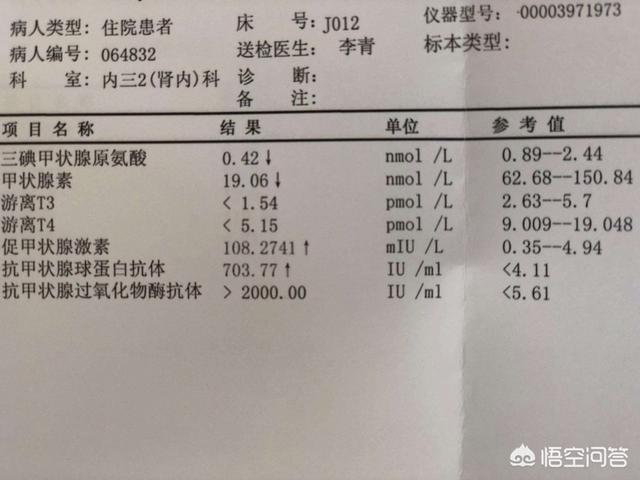
First, we should look at what are the main components of our report card? Is it three, five or seven items? What are the specifics?
In general, we often say that thyroid function includes five hormones, namely TT3, TT4, FT3, FT4, and TSH. If we have hypermetabolic syndrome (which we can simply understand as hyperthyroidism, but in fact, it is never pure hyperthyroidism), the hormone levels are often like this: TT3, TT4, FT3, and FT4 are elevated (or one or several are elevated), while TSH is lowered. or some of them are elevated), while TSH is decreased.
When our body has a hypometabolic syndrome (here we can simply understand hypothyroidism, in fact, it is never pure hypothyroidism), the hormone levels in our body are often: TT3, TT4, FT3, FT4 are reduced (or one or more of them are reduced), and TSH is elevated.
What I'm saying here is simple to understand, while thyroid-related hormones in our bodies are affected by many factors, some thyroid disorders may have different hormone levels at different stages.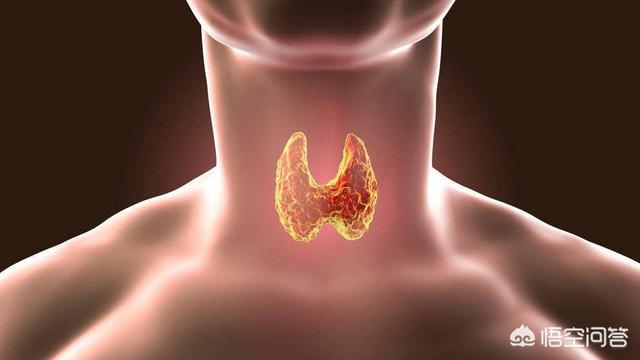
The last point I would like to make is that an ordinary thyroid report often needs to be analyzed in conjunction with the patient's own medical history and status, and sometimes the patient may have to be tested for thyroid-related antibodies, such as TRAB, TPOAB, and TGAB, and sometimes even with the patient's ultrasound, thyroid radionuclide imaging, and iodine uptake rate, in order to make an accurate diagnosis and target the right diagnosis. The diagnosis can be made accurately and in a targeted manner.
Therefore, this is not a simple question, and you should get something out of it after seeing this short science article above.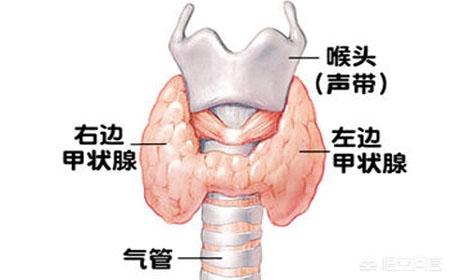
Dr. Cui will explain to you in the most straightforward words: how to read the thyroid function report card, and how to determine whether you have hyperthyroidism or hypothyroidism. In real life, thyroid diseases are becoming more and more prevalent, many people in the thyroid physical examination or review, looking at the thyroid function report so many items, do not know how to judge, and do not know whether there is no problem, can only go to the doctor for help. Below I will tell you: 2 steps to read the thyroid function report to quickly determine hyperthyroidism and hypothyroidism, in addition, in addition to the thyroid function test, we can also determine from the patient's performance of which whether the hyperthyroidism or hypothyroidism.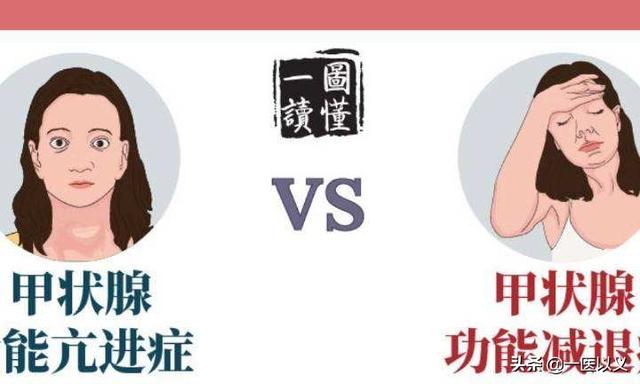
I'm still familiar with thyroid disease, first of all I'm a general surgeon, in addition both of my sisters have hyperthyroidism disease, I was in high school when my sister had hyperthyroidism. I didn't know much about the disease at that time.The only thing I know is that this disease is very difficult to cure and is called "the cancer that won't die".Because this disease is very torturous, in addition to causing all kinds of pain to patients. During the treatment period, it is also necessary to go to the hospital frequently for review, adjustment of medication and other treatments, and it requires a high degree of adherence to the treatment. My sister often sends me the report card of thyroid function so that I can judge how the disease is developing.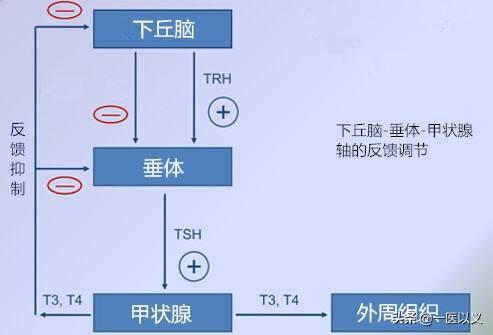
How to Read a Thyroid Function Report in 2 Steps and Quickly Determine Hyperthyroidism or Hypothyroidism
First of all, when we get our own thyroid function report card, the eye is a lot of items, such as thyrotropin (TSH), free thyroxine (FT4), free triiodothyronine (FT3), serum thyroxine (T4) and triiodothyronine (T3), etc., so that a person is dazzled, I do not know how to start, in fact, you go along with my thinking will be very simple.There are only three items you need to focus on here: thyroid-stimulating hormone (TSH), free thyroxine (FT4) and free triiodothyronine (FT3).
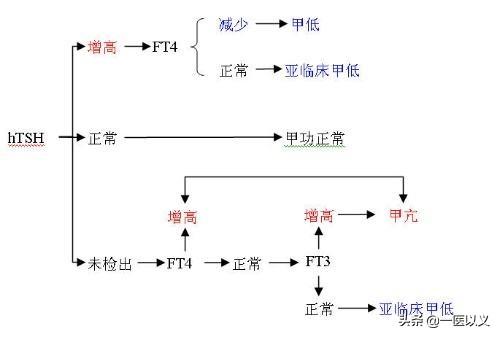
The first step is to locate the Thyrotropin (TSH) item on the thyroid function report card.
- This hormone is particularly interesting, if we compare the brain (hypothalamus) to a commanding officer and the thyroid to a soldier, this thyroid stimulating hormone is the equivalent of a telegraph operator, which transmits the instructions from the brain to the thyroid gland, and at the same time reports the condition of the thyroid gland to the brain.Therefore, changes in this hormone are very instructive in diagnosing thyroid disease.
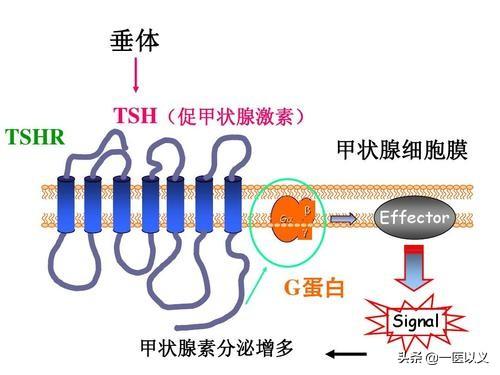
- If the thyrotropin (TSH) is abnormal in the thyroid function report, it indicates the presence of an associated disease of the thyroid gland.If the TSH is elevated, then hypothyroidism is often indicated, and if the TSH is lowered, then hyperthyroidism is present. If the TSH is within the normal range, then both of these thyroid disorders can be ruled out.Therefore, when you get the thyroid function report, you look at the TSH first, and based on the increase or decrease of TSH, then determine whether there is hypothyroidism or hyperthyroidism. However, if the increase or decrease in TSH alone cannot distinguish between clinical hyperthyroidism and hypothyroidism, or subclinical hyperthyroidism and hypothyroidism, then we need to look at the second indicator.
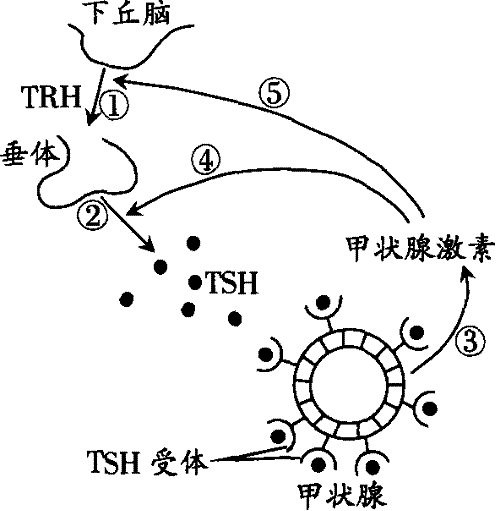
In the second step, we look at free thyroxine (FT4) and free triiodothyronine (FT3)
These two elements play a huge role in the diagnosis of hyperthyroidism or hypothyroidism.This is because changes in these two hormones can be very sensitive and highly diagnostic when hyperthyroidism or hypothyroidism occurs.And both indicators usually rise or fall at the same time.
- When an elevated thyrotropin (TSH) is found, theIf both free thyroxine (FT4) and free triiodothyronine (FT3) are found to be below the reference values, then you can boldly conclude that this is clinical hypothyroidism.As for non-subclinical hypothyroidism, this is a time when it is essential to be treated under a doctor's supervision, or else there can be significant health effects.
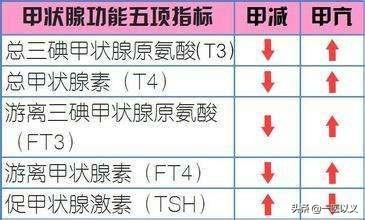
- And when you've noticed an increase in thyrotropin (TSH) after theBut found that free thyroxine (FT4) and free triiodothyronine (FT3) are within the normal range, this time you should not be lucky, because you are in the stage of subclinical hypothyroidism.Subclinical hypothyroidism should not be ignored. Because the accumulation of the disease will soon develop into clinical hypothyroidism, which in turn affects the body and requires early prevention and treatment.
- And when you notice a decrease in thyrotropin (TSH).And when this is accompanied by free thyroxine (FT4) and free triiodothyronine (FT3) higher than normal reference values, then you can venture a diagnosis of hyperthyroidism disease.And this is clinical hyperthyroidism, not subclinical hyperthyroidism, also need early medical treatment. It should not be delayed, so as not to delay the condition, resulting in serious consequences.
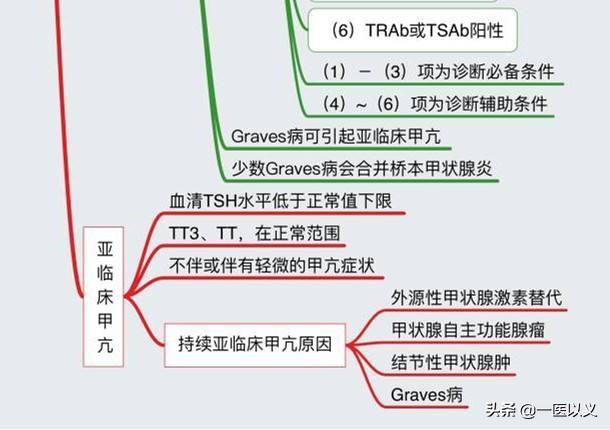
- In addition, when you notice a decrease in thyrotropin (TSH), theHowever, free thyroxine (FT4) and free triiodothyronine (FT3) are in the normal range, and this is when you should consider the presence of subclinical hyperthyroidism.Subclinical hyperthyroidism can also progress to clinical hyperthyroidism and requires early management.
- There is also a special case when you notice a decrease in thyrotropin (TSH), theHowever, if only the free triiodothyronine (FT3) is elevated while the free thyroxine (FT4) is within the normal range, then hyperthyroidism is also diagnosed, but this type of hyperthyroidism is more specific and is called T3 hyperthyroidism.Again, this can have serious consequences for the patient.
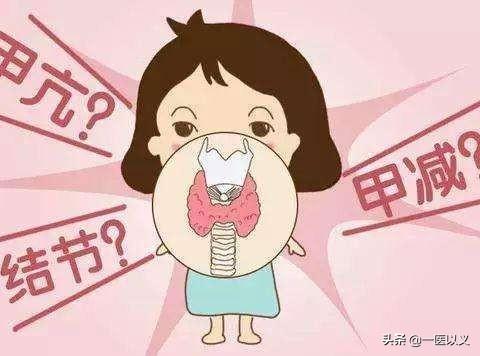
In addition to thyroid function, hyperthyroidism can be determined based on clinical symptoms
First of all, hyperthyroidism can develop at any age.And clinical statistics show that the main age of onset is 20-40 years old, and the vast majority are women.Thyroid patients may exhibit symptoms of high body wasting capacity, i.e., excessive consumption of proteins as well as lipids in the body.Excessive consumption of these energy substances can cause the body to show signs of sweating, irritability as well as weight loss.And as a result of this exertion over a long period of time, it also causes the patient to be easily tired and weak at work, which you can often confirm in your life, because there are almost no patients with hyperthyroidism who are obese, and this is because most of the fat is consumed.

- Beyond that.Patients with hyperthyroidism also experience changes in the heart, theEspecially if the progression of the disease is uncontrolled, that is to say, those patients with hyperthyroidism who have not been detected or who are not treated with regular medication.Often, tachycardia, arrhythmia and even enlargement of the heart occurs.And if you are older, you can also develop atrial fibrillation as well as heart pain. Just the other day my second aunt was found to have hyperthyroidism because of her heart discomfort, and it turns out that she never knew she had hyperthyroidism, which led to the progression of the condition and the development of cardiac changes.
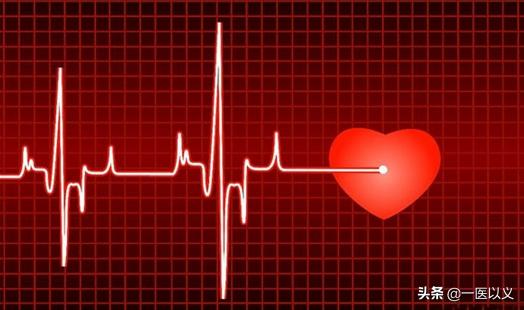
- And it is better known that people with hyperthyroidism are usuallymental as well as emotional changes, such as sudden impatience, nervousness, as well as agitation.This is due to the abnormal secretion of thyroid hormones, which in turn leads to changes in their neurological and muscular action. In addition, there is a specific symptom: involuntary shaking of the hands, which is one of the reasons why hyperthyroidism is detected in many patients.How to tell if you have shaky hands, you can put your hands flat, and then put a piece of white paper on top of them to see if the white paper is shaking quickly.In addition, people with hyperthyroidism generally exhibit a tendency to get angry.

- In addition, patients with hyperthyroidism have aThe characteristic sign is that it develops bulging eyes.You can tell that this patient is hyperthyroidism at first sight because his eyes are very obviously bulging out, which is caused by the production of a hormone that leads to oedema, enlargement of the eyeballs, and muscle growth of the eye, and the eyes will also appear to be rotationally impaired, and even more so, there will be damage to the corneal membrane of the eye, and even lead to blindness.

- But there are exceptions.There is a type of hyperthyroidism called apathetic hyperthyroidism, which is the opposite of the usual symptoms of hyperthyroidism, often showing a lack of talk, indifference to people, and almost no emotional expression.However, this kind of apathetic hyperthyroidism usually occurs in the elderly, and most of them are elderly women, sometimes you will find some elderly people often alone in the daze or sleep. And this kind of patient also has a characteristic, that is, the skin is very dry, not smooth at all, and seldom sweat, this kind of patient is difficult to be found, it is easy to cause misdiagnosis, if the condition is aggravated there may be serious adverse consequences.
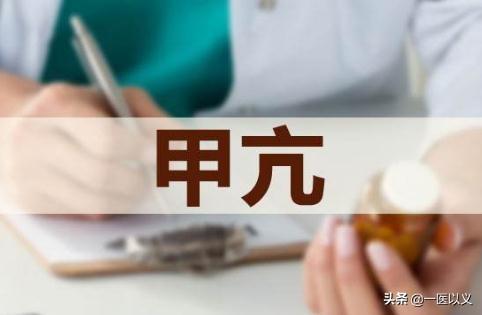
What are the signs of hypothyroidism that can be detected?
For patients with hypothyroidism.One of the more specific manifestations is that the patient's skin becomes edematous, and here's the kicker, it's edematous not fat.You can easily distinguish this type of edema by its appearance, which is mostly seen on the patient's face as well as on the hands and feet. Unlike cardiogenic edema, this type of edema does not appear as a small pit when you press on it. Moreover, the skin of patients with hypothyroidism usually looks very rough and not smooth, and there is localized thickening of the skin, which looks like a working woman.When the disease progresses further, these patients will also have localized skin pallor and coldness, and it should not be overlooked that patients with hypothyroidism are more prone to hair loss, especially hair and limb hair.
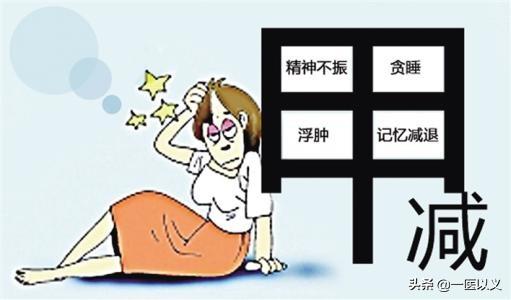
- Compared to patients with hyperthyroidism, thePatients with hypothyroidism also experience changes in the heart. However, these changes are the opposite of the heart changes caused by hyperthyroidism, which cause the patient's heart to slow down and the heart's function to diminish.As a result, it is difficult to supply blood to all parts of the body, and the patient may suffer from weakness and anemia, and over time, the patient may develop pale skin, etc. However, hypothyroidism may also cause an enlarged heart. However, hypothyroidism may also cause an enlarged heart because it causes the heart muscle to dilate and fluid to leak, increasing the burden on the heart, but rarely causing heart pain.
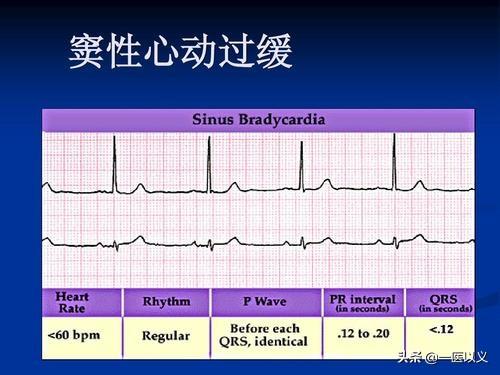
- HypothyroidismThere may also be mental and psychological changes due to the lack of positive effects of thyroid hormones in hypothyroidism, which can make the patient more apathetic and anxious.I have no interest in anything. I am still familiar with this, my cousin is hypothyroidism, she will often appear depressed in the first few years, almost do not want to live, there is no hope for life, and then after the appropriate medication, this situation has improved to a certain extent. Therefore, if people around you suddenly show signs of unresponsiveness or sleepiness, you should be alert to the presence of hypothyroidism.
- Not only that.Patients with hypothyroidism also experience gastrointestinal hypoplasia, which first manifests itself in the form of an inability to eat, but the patient is obese, which is not caused by diet.Rather, it is caused by the large amount of water stored in their bodies. Hypothyroidism will cause patients to have reduced gastrointestinal motility, resulting in stasis of blood in the gastrointestinal tract, which will in turn lead to abdominal distension, nausea and vomiting. In addition, hypothyroidism will also cause intestinal absorption disorders, leading to nutritional deficiencies, and although the patient may look fatter, he or she is actually deficient in nutrients.
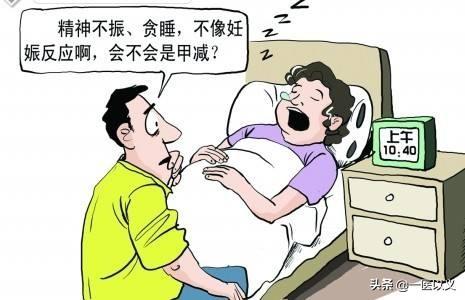
- There are also a number of hypothyroid patients who state that they experience pain in the muscles of the body, especially during the cold weather season, and always feel an involuntary shiver, and also feel a stiffness in the muscles that leads to a slowdown in activity.This is due to the lack of thyroid hormones in the muscles, which makes it difficult for the patient's bones and muscles to maintain normal activity. Therefore, patients with hypothyroidism must take thyroid hormone supplements.
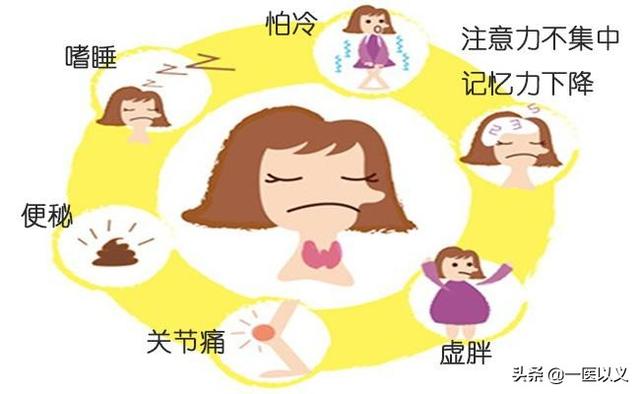
summarize
Dr. Cui explained how to read the thyroid function report in 2 steps, the first step is to look at the level of thyroid stimulating hormone (TSH), and then read the level of free thyroxine (FT4) and free triiodothyronine (FT3), which are the only 2 steps that can be taken to diagnose the presence of hyperthyroidism or hypothyroidism. In addition, in daily life, we can also determine whether hyperthyroidism or hypothyroidism exists according to the clinical symptoms of the patient, so as to achieve early detection and early treatment.
The most routine thyroid function test is also called "thyroid five", which consists of five common indicators: thyroid hormone T3, thyroid hormone T4, free thyroid hormone T3 (FT3), free thyroid hormone T4 (FT4) and thyroid stimulating hormone (TSH). In short, it is 4 hormones related to thyroid function plus one hormone that promotes thyroid hormone production.
Generally speaking, the five indicators mentioned above are sufficient to determine whether you have hyperthyroidism (hyperthyroidism) or hypothyroidism (hypothyroidism). However, in cases where autoimmune thyroiditis (e.g., Hashimoto's thyroiditis) is suspected, thyroid autoimmune antibodies (TPOAb) and thyroglobulin antibodies (TGAb) are needed in addition to the above five markers. In the case of large thyroid nodules of unknown nature detected by imaging and suspected to be thyroid tumors, thyroglobulin (Tg) and calcitonin (CT) are also needed.
From the point of view of the general population, it is not necessary to understand the very complicated method of interpreting the thyroid function report, but more importantly, it is good to have some general knowledge about thyroid function.
When we look at the thyroid function report, we can start by looking at the levels of the 4 thyroid hormones T3, T4, FT3 and FT4. In short, an increase in these 4 indicators often represents an overproduction of thyroid hormones, which is a manifestation of hyperthyroidism, and is labeled as "hyperthyroidism"; while a decrease in these 4 indicators indicates an underproduction of thyroid hormones, which is a manifestation of hypothyroidism, and is labeled as This is a sign of hypothyroidism, which is labeled as "hypothyroidism". However, T3, T4 and FT3, FT4 are different, and this difference is that the sensitivity of FT3, FT4 is higher than that of T3 and T4, so how to understand this sensitivity? That is, when the body sometimes occurs hyperthyroidism or hypothyroidism, T3 and T4 may not have obvious changes, but FT3 and FT4 will be more sensitive to the body's function to respond to thus appearing changes in indicators. Therefore, it can be understood that the reference value of FT3 and FT4 is greater than that of T3 and T4, and when there is an increase or decrease in FT3 and FT4, it is often indicative of the collective possibility of hyperthyroidism or hypothyroidism.
TSH is a hormone that regulates the functioning of the thyroid gland. However, when the level of thyroid hormone in the organism decreases, the organism will automatically recognize this state, and thus increase the secretion of TSH in order to promote the secretion of more thyroid hormone by the thyroid gland; whereas, when the level of thyroid hormone in the organism is very high, the organism will recognize this state, and will thus reduce the secretion of TSH instead of continuing to promote the secretion of thyroid hormone. Therefore, when the body is in a state of hyperthyroidism, the level of TSH should be reduced, while when the body is in a state of hypothyroidism, the level of TSH should be increased.
To summarize, typical hyperthyroidism should be characterized by increased levels of FT3 and FT4 and decreased levels of TSH, while typical hypothyroidism should be characterized by decreased levels of FT3 and FT4 and increased levels of TSH. However, sometimes we can see the phenomenon of normal levels of FT3, FT4, T3, T4 and other thyroid hormones, but elevated levels of TSH, which is often defined as "subclinical hypothyroidism", that is, the thyroid function has begun to decline, but the thyroid hormones are still able to maintain within the normal range.
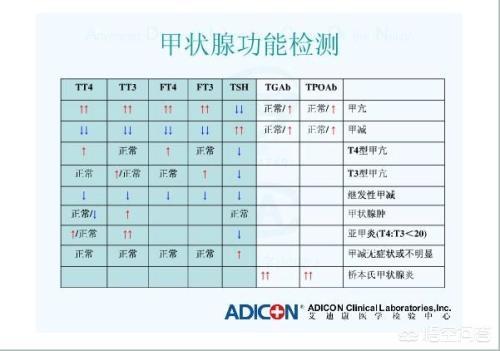

Hello, this question I can answer you, I am a pharmacist in charge, I hope my answer is helpful to you, welcome to pay attention. Any questions about medication, please leave a message or private message, will certainly reply!
① First, hypothyroidism
Hypothyroidism is hypothyroidism, a syndrome of generalized hypometabolism due to decreased synthesis and secretion of thyroid hormones or insufficient tissue utilization. It is more common in women.
Laboratory diagnostic indicators of hypothyroidism
Thyroid Stimulating Hormone ------TSH
Serum total thyroxine ------TT4
Free thyroxine ------FT4
Total triiodothyronine ------T3
Among them, TSH, T4 are the first-line indicators for the diagnosis of hypothyroidism.
Primary hypothyroidism has increased serum TSH and decreased both TT4 and FT4.
T3 is converted from T4 in peripheral tissues and is not required for the diagnosis of primary plus/minus.
Subclinical hypothyroidism has only increased TSHH with normal TT4 and FT4.
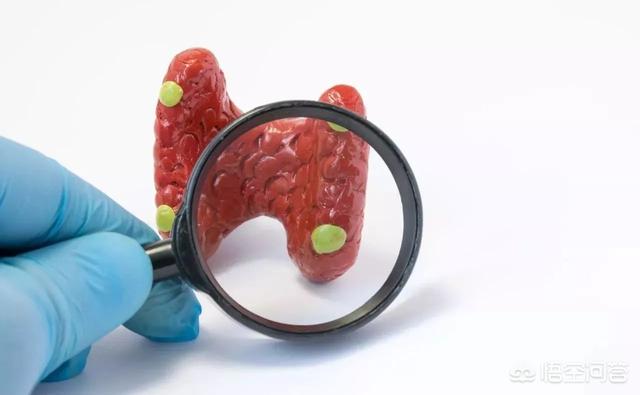
Clinical manifestations of hypothyroidism:
symptoms
The main manifestations are decreased metabolic rate and sympathetic nervous system stimulation. Early patients with mild disease may have no specific symptoms. Typical patients have cold, fatigue, swelling of hands and feet, drowsiness, memory loss, low sweating, joint pain, weight gain, constipation, menstrual disorders or excessive menstruation in women, and infertility.
clinical examination
Typical patients may have a dull expression, unresponsiveness, hoarseness, hearing impairment, pallor, facial and/or eyelid edema, thick lips and tongue, often with teeth marks, dry, rough, flaky skin, low skin temperature, edema, ginger-colored skin on the palms of the hands and feet, thinning and drying of hair, prolonged Achilles tendon reflexes, and a slow pulse rate. In a few cases, there is anterior tibial mucous edema.
Specific medical history such as thyroid surgery, hyperthyroidism I treatment; history of Graves' disease, Hashimoto's thyroiditis and family history are also taken into account.
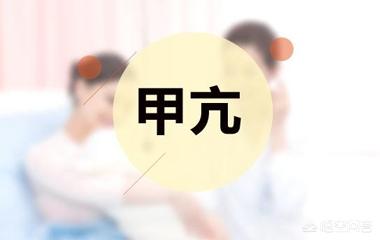
② Plus hyperthyroidism
Hyperthyroidism is a thyrotoxicosis that becomes hyperthyroidism due to hyperfunctioning of the thyroid gland itself and increased synthesis and secretion of thyroid hormones.
Laboratory diagnostic indicators of hyperthyroidism
The preferred indicator of hyperthyroidism is sTSH, or sensitive TSH.
The average hyperthyroid patient has a TSH of less than 0.1 mIU/L.
Measurement of serum free T4 and T3 provides a more ready response to thyroid function.
If free T4 and T3 are elevated and TSH is decreased, this can be used as a diagnosis of hyperthyroidism.
clinical manifestation
Easily agitated, irritable and insomnia, palpitation, fatigue, fear of heat, excessive sweating, emaciation, hyperphagia, increased frequency of stools or diarrhea, scanty menstruation in women. It may be accompanied by periodic paralysis and progressive weakness and atrophy of proximal muscles.
Most patients have varying degrees of goiter.
Laboratory-related tests, combined with clinical manifestations, can determine hyperthyroidism.
Hand typing is not easy, please move your fingers , click to follow.
Any questions about medication, please leave a comment or private message and be sure to respond!
The above is for reference only and is not to be used as a basis for medication or diagnosis, please consult a regular hospital for details!
How is the thyroid function report card interpreted and how is hyperthyroidism and hypothyroidism recognized?
The function of the thyroid gland can usually be initially determined by drawing blood tests.Among the indicators commonly used in reporting are the following:Thyroid stimulating hormone (TSH), serum total thyroxine (TT4), serum free thyroxine (FT4), free triiodothyronine (FT3), serum total triiodothyronine (TT3). In the case of hyperthyroidism, there may be changes in the following indicators: decreased thyrotropin (below the lower limit of normal), increased serum total and serum free thyroxine (above the upper limit of normal); in the case of hypothyroidism, there may be changes in the following indicators: increased thyrotropin (above the upper limit of normal), decreased serum total and serum free thyroxine (below the lower limit of normal). However, the diagnosis of hyperthyroidism and hypothyroidism also needs to be combined with specific manifestations, and the endocrinologist can be consulted for details.
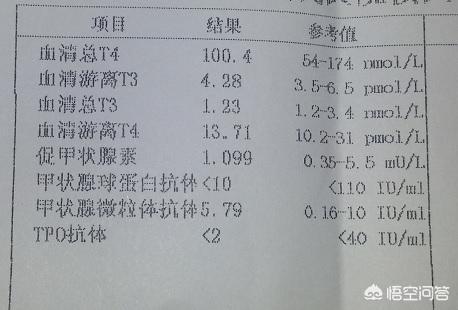
What causes hyperthyroidism?
The following common causes of hyperthyroidism are currently recognized: 1). Diffuse toxic goiter, which is an autoimmune disease; ②. A high-functioning adenoma on the thyroid gland; (3). Thyroid-stimulating hormone tumor of the pituitary gland; (3). Multinodular toxic goiter; ④. Hashimoto's hyperthyroidism, etc. If hyperthyroidism is found, further examination (e.g. thyroid ultrasound, etc.) is needed to identify the cause of the disease and treat the symptoms. Currently, its treatment mainly includes medication (e.g., propylthiouracil, etc.), 131I treatment, and surgical treatment (surgical removal of abnormal thyroid tissue).
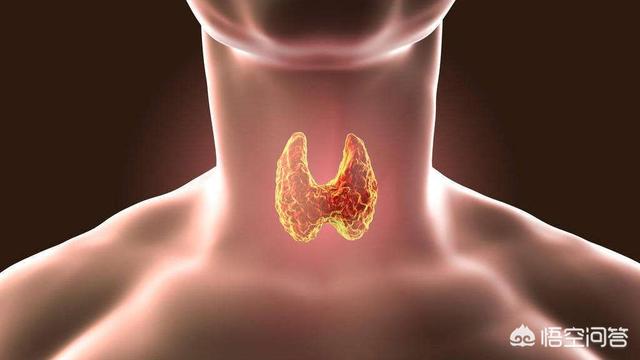
What causes hypothyroidism?
There are several common causes of hypothyroidism: ①. Damage to the thyroid gland caused by autoimmune diseases, such as Hashimoto's thyroiditis, postpartum thyroiditis, etc.; ②. Postoperative thyroid surgery; ③. Excessive iodine intake; ④. Hyperthyroidism 131I treatment. The current treatment for this disease is mainly thyroxine supplementation.
I hope that my answer will help you! Give me a like if you like it!
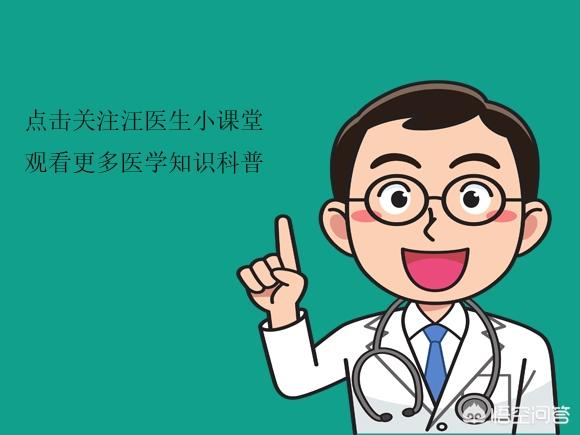
With the increasing precision of the examination equipment, checkup programs in the thyroid ultrasound can see the thyroid more clearly, check the thyroid function of the crowd is also more and more, but in the face of the thyroid function, I believe that many people are not how to judge, after all, unlike blood glucose data so intuitive, so how to read the thyroid function report card, how to know how their own condition is in the end?
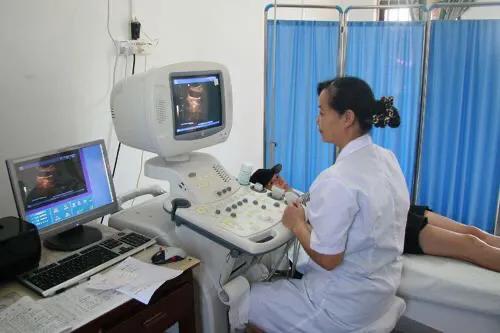
Explain it briefly so that when you go to the hospital with your checklist to the doctor, you will have it in your mind and be able to understand the terminology that the doctor explains to you. But it is very important to listen carefully to the advice of the professional doctor!
How do I read a thyroid function checklist?
Thyroid function in the checkup program is usually 3 items, or 5 items, which is commonly known by doctors as the thyroid function three items, or thyroid function five items, some hospitals may also check the thyroid function seven items, and usually choose to check according to the patient's condition.
The thyroid function panel is the core of the thyroid test. It contains items such as free thyroxine, free triiodothyronine and thyroid stimulating hormone.
Abnormalities of free thyroxine and free triiodothyronine
First we look at free thyroxine and free triiodothyronine, both of which are critical in determining thyroid function, and when clinical hypothyroidism or hyperthyroidism occurs, both of these markers will change because they will be elevated or decreased at the same time, so if they are elevated, they are hyperthyroid, and if they are decreased, they are hypothyroid.

Abnormal thyroid stimulating hormone
Let's look at thyroid stimulating hormone again. If both of these results are elevated or lowered at the same time, then the thyroid stimulating hormone will usually be either lowered or elevated. This is further evidence of hypothyroidism or hyperthyroidism.

Of course it can happen that both results are normal, and if there is an increase and decrease in thyroid stimulating hormone, then clinically the diagnosis is subclinical hypothyroidism or subclinical hyperthyroidism. No treatment is usually required.
Changes in thyrotropin in pituitary disease
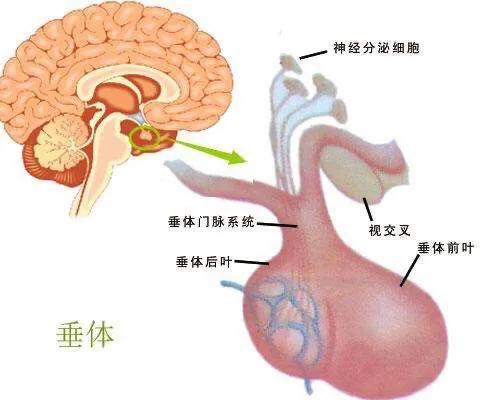
Hyperthyroidism is the lowering of thyrotropin, but in hypothyroidism thyrotropin levels are not always elevated, but also lower levels of thyrotropin, which suggests that the patient's pituitary-thyroid command is abnormal, and that the patient may have hypopituitarism. Diseases such as surgical injuries, Schihan's syndrome, pituitary tumors, and so on.
It is important to note that the above results only indicate the state of thyroid function represented by this blood test. Disease conditions are very complex, when the items on the checklist show hyperthyroidism, there may be hyperthyroidism, hyperthyroidism in the treatment, hyperthyroidism recurrence, or hypothyroidism supplementation of thyroid hormone dosage is too large, but also may be the use of thyroid hormone after surgery for thyroid cancer. to inhibit the proliferation of thyroid cancer and so on. Therefore, when going to the hospital, listen to the doctor's advice, do not arbitrarily change the medication.
After my thyroid surgery, there is low blood calcium and TSH6 ` 8, the other 4 items are normal, the doctor let take eugenol now for 2 years and 1l months, the five items of thyroid function is normal, start to eat Ⅰ tablets of eugenol I always have a panic attack and hand tremor, and then reduced to half a tablet a day, the five items of thyroid function is also normal, can I stop taking the medication?
This question and answer are from the site users, does not represent the position of the site, such as infringement, please contact the administrator to delete.